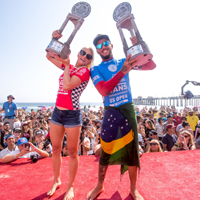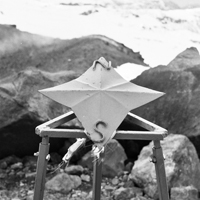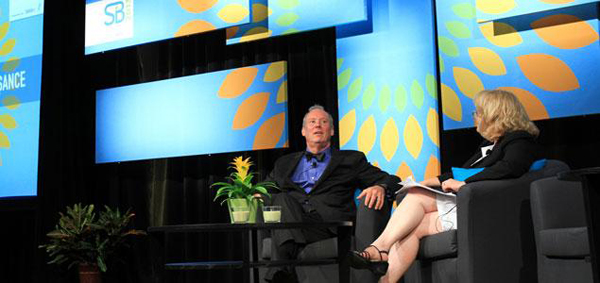
Sustainable Brands 2013 Conference which wrapped-up June 6th in San Diego, CA, brought together some of the top industry leaders in sustainability. With presentations ranging from ours at Label Network on “Sustainability and the State of the Future and Youth Culture,” to the keynote address by author, architect, and sustainability leader William McDonough, the week elevated the conversation of what’s reshaping our world.
The highlight for many was the rousingly fierce presentation by McDonough, who recently just published his next book with scientist Michael Braungart called “The Upcycle.” McDonough launched into a sharp criticism that while everyone is talking about metrics to do “less bad” the real importance is understanding the value system of doing “more good.” It was a pivotal moment and one that he emphasizes in his book. That consumption isn’t the evil thing if we design for things to be consumed and then, perhaps upcycled. But rather, how we measure, how we always talk about zero emissions, and doing less bad, is the problem because it does not get at the root of the situation to begin with.
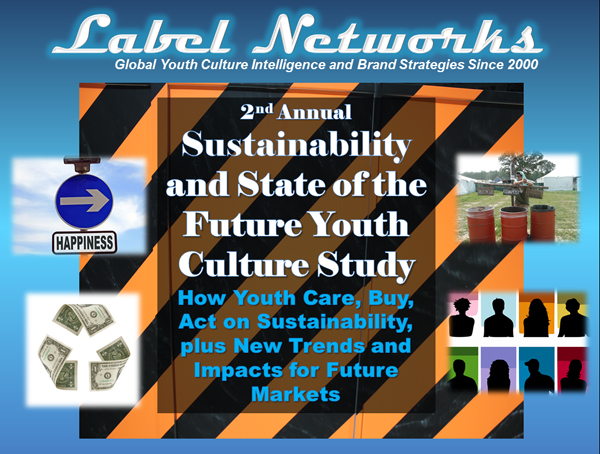
In 2012, the sustainable consulting business reached $9 billion, illustrating that it’s a growing space within the marketplace. But as McDonough pointed out, measuring “sustainability” means basically measuring how to stop doing things the wrong way rather than redesigning the right way so that we don’t even have to measure negative effects.
“It’s our time now. We’ve run up against the wall and it’s our ecological century,” stated McDonough.
Similarly, in our presentation, based on our research among 13-25-year-olds across the United States, we noted a psychological shift among this new generation that is not only thinking about sustainability issues, but are creating new ways that they feel have less impact on the earth and/or ways that can upcycle to a better place on how we do things. These new values of what’s important to one’s lifestyle have created a new generation gap right along with technology.
This generation gap was apparent at the Sustainable Brands 13 conference as ironically, in many conversations we had with various brands and attendees, when we told them about our presentation topic, the response was often, “but young people just don’t care.” Just the opposite is true. McDonough indicated the same thing.
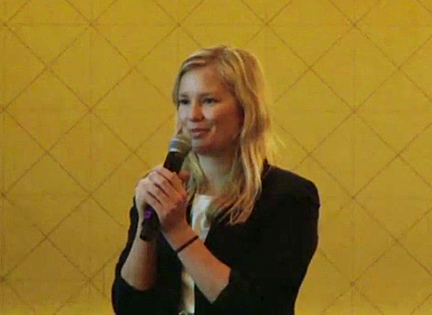
Finally, during the Q&A after McDonough’s presentation, a young Norwegian girl took the mic and asked a very important question:
“You say you were taught to keep score, but not do the right thing. So, when you’re not taught to do the right thing, that’s when you figure out the right thing because you search within yourself. Sustainability is sort of like that, getting back to figuring out what’s important. So, how do we enable the next generation to do the right thing not by telling them but by getting them to figure out cognitively how to do the right thing and get to that stage themselves?”
McDonough quoted a famous philosopher, “If it is possible, therefore it exists.” To him, the designers’ intention is how it will exist. “Our job is to make that exist. The difficulty is the vacuum…
According to McDonough, the most powerful forces are not necessarily gravitational; it might be the vacuum, the emptiness. “That’s where the fierceness is, that’s where the fear is…the vacuum of not knowing what to do.”
“What we need to do is to tell everyone that you can and could be fierce…” Not knowing what to do is the beginning of creating what could exist. This is when you question the “rituals.” And what’s needed now, is a “fierce commotion. What’s next is what’s next… and the next job is to design what’s next into what’s needed right now.”
Check-out his presentation at Sustainable Brands.

